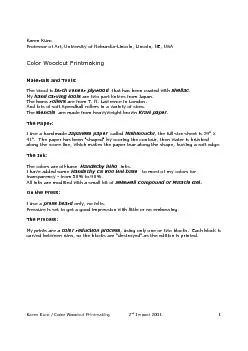PPT-Karen Horney
Author : luanne-stotts | Published Date : 2016-03-20
Biography Born Karen Danielson in Hamburg Germany in 1885 Father was a stern authoritarian sea captain age 50 when she was born Mother was a sophisticated attractive
Presentation Embed Code
Download Presentation
Download Presentation The PPT/PDF document "Karen Horney" is the property of its rightful owner. Permission is granted to download and print the materials on this website for personal, non-commercial use only, and to display it on your personal computer provided you do not modify the materials and that you retain all copyright notices contained in the materials. By downloading content from our website, you accept the terms of this agreement.
Karen Horney: Transcript
Download Rules Of Document
"Karen Horney"The content belongs to its owner. You may download and print it for personal use, without modification, and keep all copyright notices. By downloading, you agree to these terms.
Related Documents














